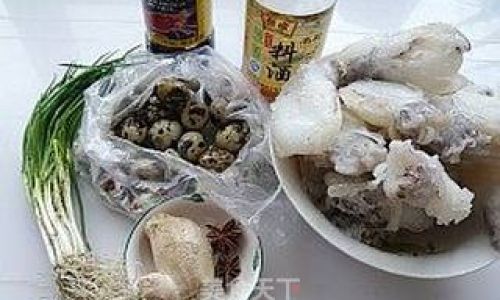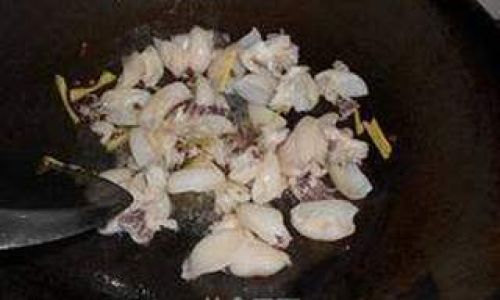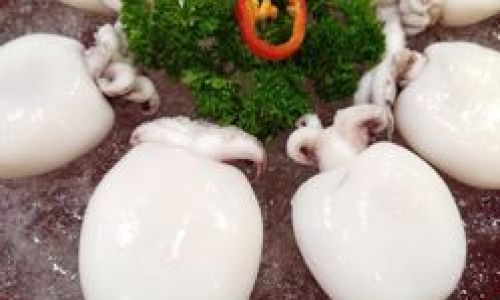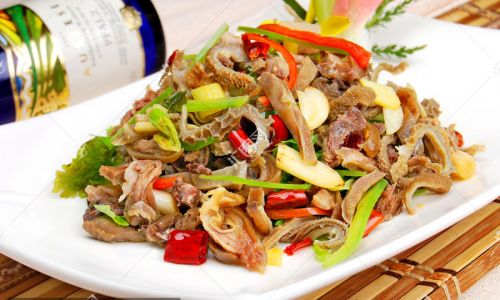Introduction
Chilled cuttlefish, also known as ice-cold marinated cuttlefish, is a dish that marries the briny sweetness of the sea with a zesty, aromatic marinade. This recipe, rooted in Asian culinary traditions, has gained popularity worldwide for its refreshing texture and vibrant flavors. Perfect for summer gatherings, appetizers, or light meals, this dish requires precision in preparation to achieve the ideal balance of tenderness and crispness. In this comprehensive guide, we will explore every facet of crafting this culinary masterpiece—from selecting the freshest ingredients to plating with finesse.
Understanding the Star Ingredient: Cuttlefish
Cuttlefish, a cephalopod related to squid and octopus, is prized for its mild, slightly sweet flavor and firm yet tender flesh. Unlike its cousins, cuttlefish has a unique texture that becomes delicately chewy when cooked correctly. For this recipe, fresh or frozen cuttlefish works equally well, but fresh is always recommended for superior taste. When purchasing, look for specimens with glossy skin, intact tentacles, and a mild oceanic scent. Avoid those with a strong fishy odor, as this indicates spoilage.

Ingredients: Quantities and Roles
To serve 4–6 people, gather the following:
- 500g fresh cuttlefish (cleaned and prepared)
- 1 medium cucumber (thinly sliced)
- 1 carrot (julienned)
- 1 red bell pepper (thinly sliced)
- 3 garlic cloves (minced)
- 1-inch ginger (grated)
- 2 green onions (chopped)
- 1 red chili (deseeded and sliced, optional)
- 1/4 cup soy sauce (light soy for saltiness)
- 2 tbsp rice vinegar (for acidity)
- 1 tbsp sesame oil (for nutty aroma)
- 1 tbsp sugar (to balance flavors)
- 1/4 tsp white pepper (for subtle heat)
- 1/2 lemon (juiced, for brightness)
- 1 tbsp toasted sesame seeds (for garnish)
- 1/4 cup fresh cilantro (chopped, for garnish)
- Ice cubes (for shocking the cuttlefish)
Key Role of Each Ingredient:
- Cuttlefish: The protagonist, providing protein and a meaty texture.
- Vegetables: Add crunch, color, and freshness.
- Aromatics (garlic, ginger, chili): Infuse depth and warmth.
- Marinade: A symphony of soy, vinegar, sesame oil, and sugar that tenderizes and flavors the cuttlefish.
Step-by-Step Preparation Guide
Cleaning and Preparing the Cuttlefish
Cleaning cuttlefish requires care to remove inedible parts:
- Step 1: Rinse the cuttlefish under cold water.
- Step 2: Pull the head away from the body. The entrails and a plastic-like “bone” (called the cuttlebone) will come out. Discard these.
- Step 3: Remove the eyes and beak (a small, hard circle) from the tentacles.
- Step 4: Peel off the purple skin to reveal the white flesh.
- Step 5: Slice the body into ½-inch rings and the tentacles into bite-sized pieces.
Pro Tip: Use kitchen scissors for easier cutting.

Blanching: The Secret to Tenderness
Blanching locks in moisture and ensures the cuttlefish cooks evenly:
- Step 1: Fill a large pot with water, add a pinch of salt, and bring to a rolling boil.
- Step 2: Prepare an ice bath by mixing ice cubes and cold water in a bowl.
- Step 3: Add the cuttlefish to the boiling water and cook for 2–3 minutes. Overcooking will result in rubberiness.
- Step 4: Immediately transfer the cuttlefish to the ice bath. This “shocks” the flesh, preserving its texture.
Crafting the Marinade
The marinade is the soul of the dish. Combine:
- Soy sauce (umami base)
- Rice vinegar (tangy kick)
- Sesame oil (aromatic richness)
- Sugar (to mellow acidity)
- White pepper (subtle heat)
- Lemon juice (freshness)
Whisk until the sugar dissolves. Adjust ratios to taste—add more vinegar for tartness or sugar for sweetness.
Marinating Process
- Step 1: Drain the chilled cuttlefish and pat dry.
- Step 2: In a large bowl, toss the cuttlefish with minced garlic, ginger, and chili (if using).
- Step 3: Pour the marinade over the mixture, ensuring even coating.
- Step 4: Cover and refrigerate for at least 1 hour, but ideally overnight. This allows flavors to penetrate the flesh.
Assembling the Dish

- Step 1: Arrange the cucumber, carrot, and bell pepper on a serving platter.
- Step 2: Top with the marinated cuttlefish, reserving the marinade.
- Step 3: Drizzle a spoonful of the marinade over the vegetables for extra flavor.
- Step 4: Garnish with sesame seeds, cilantro, and green onions.
Serving Suggestions
- Pair with chilled sake, iced green tea, or a crisp lager.
- Serve as an appetizer with steamed rice or as part of a banquet spread.
- For a heartier meal, add avocado slices or mango cubes for creaminess and sweetness.
Troubleshooting Common Issues
- Rubbery Cuttlefish: Overcooking is the culprit. Stick to 2–3 minutes in boiling water.
- Bland Flavor: Increase marinating time or add a splash of fish sauce.
- Watery Texture: Ensure the cuttlefish is thoroughly drained and patted dry before marinating.
Variations and Customizations
- Spicy Lover’s Edition: Double the chili or add a teaspoon of gochujang (Korean chili paste).
- Citrus Twist: Replace lemon juice with lime and add orange zest.
- Herb-Infused: Toss in mint leaves or basil for a fragrant finish.
- Vegan Adaptation: Substitute cuttlefish with king oyster mushrooms or hearts of palm for a plant-based version.
Nutritional Benefits
Cuttlefish is a lean protein source, rich in:
- Vitamin B12: Essential for nerve function.
- Selenium: A potent antioxidant.
- Copper: Supports immune health.
- Low in Fat: Ideal for calorie-conscious diets.
Cultural Significance
In East Asian cuisine, chilled seafood dishes like this one are revered during hot seasons for their cooling properties. The dish’s roots trace back to coastal regions where fresh catch was preserved through quick pickling. Today, it symbolizes harmony between simplicity and complexity—a testament to how minimal ingredients can yield extraordinary flavors.

Conclusion
Crafting the perfect chilled cuttlefish is an exercise in patience and precision. From selecting the freshest ingredients to mastering the blanch-and-shock technique, every step contributes to a dish that delights the senses. Whether hosted at a dinner party or enjoyed as a solo indulgence, this recipe promises to elevate your culinary repertoire. Experiment with variations, share it with loved ones, and savor the ocean’s bounty in every bite.
Final Tip: Leftovers can be stored in an airtight container for up to 2 days, though the vegetables may soften slightly. For optimal texture, consume fresh.
Now, armed with this guide, venture into your kitchen and let the symphony of flavors unfold. Bon appétit!





0 comments